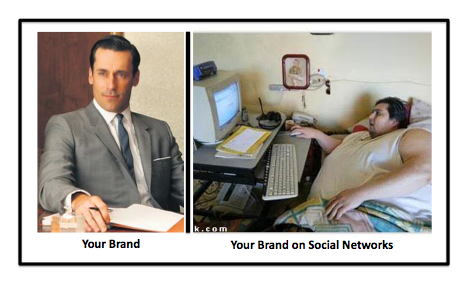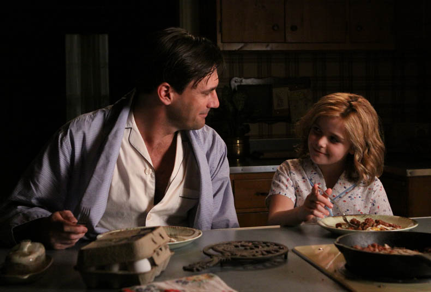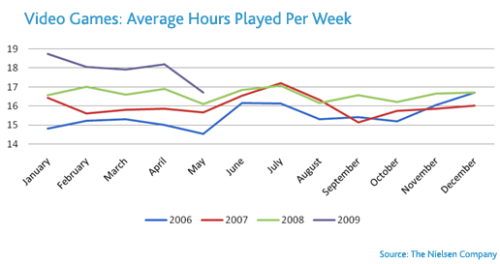
Photo credits (left to right): Photobucket.com, Funlok.com
In the early days of my marketing career, I spent a fair amount of time both in front of, and behind, focus group room mirrors, leading or observing consumers play a brand personification game. The game is simple: the moderator provides the name of a brand. The consumers create a profile — using words, photos or other prompts to represent the brand as a person — complete with gender, voice, clothing, accessories, hair style, profession, relationships, and cars. So, for instance, a Citibank cardmember might be a married, mid-level male manager wearing a department store suit, a Timex watch, driving a Ford Taurus, and living in the suburbs. A Discover cardmember, on the other hand, might be a white construction worker, driving a 1970’s Oldsmobile with crackled leatherette seating.
We used these exercises to help uncover consumer insights about brands — both in terms of what the brand currently stood for and where we could take the brand — as well as the brand’s voice and personality which we then translated into marketing, product development, PR and advertising strategies.
While these exercises gave us an understanding of consumers’ perceptions of a wide range of brands, it also provided snapshots of the effectiveness of brand campaigns across consumer touchpoints. The more consistent, the greater the consumer internalization of the campaign. For instance, throwing a pack of Marlboros on the table would immediately elicit the Marlboro man; a pack of Camels, Joe Camel. Some brands — insurance companies, manufacturers, airlines, pharmaceuticals, for example — were difficult for consumers to humanize; the brands were either too institutional or too diffuse, making it difficult for them to construct a “real” persona.
I’ve been thinking about those personification exercises lately as I skim updates of brands I have friended, fanned or followed. Many of these brands’ social network presences are devoid of personality; their persona existing only as a broadcast channel spewing an endless ticker tape feed of news and sales promotions. Others have developed a social persona painfully out of sync with their brand. A brand that was most likely developed through diligent research, creative brainstorming and careful nurturing. A brand that is supported by expensive broadcast advertising, strategic partnerships and product placements. A brand created by branding and marketing professionals for both consumer acceptance and enduring competitive advantage. A brand consumers can easily call up in a brand personification exercise, complete with voice, accent and lifestyle.
These out of sync brand personas do more damage to a brand than abstaining entirely from social network participation. Don’t get me wrong: I do believe brands should participate in social networks; they are incredible branding opportunities. However, the brand on a social network needs to be as meticulously managed as it is in any other manifestation. You shouldn’t just “jump in” — despite what many social media experts advise — without a strategy and voice alignment with the overarching brand.
Otherwise, you risk confusing consumers with what your brand stands for. Or worse, denigrating your brand. And, if you are a premium brand, you can’t sustain your premium stature with a social brand that is unpolished, sterile or just generally out of sync. That’s what many brands did in the early days of the Internet. Then, like now, companies entered a new medium awkwardly: they knew they should have a presence, but didn’t believe it would really help their business. So, they put the most junior person or persons on it; they gave them limited resources and they allowed technicians without a brand background to develop and execute the strategy. The result? Sites that were ugly, dull, and undeserving of representing the brand.
So, is your brand Don Draper in all of its manifestations? Or is a there a “computer slob” counterpart representing Don on your social networks?
Read Full Post »










 Or, so it seemed at yesterday’s
Or, so it seemed at yesterday’s 





